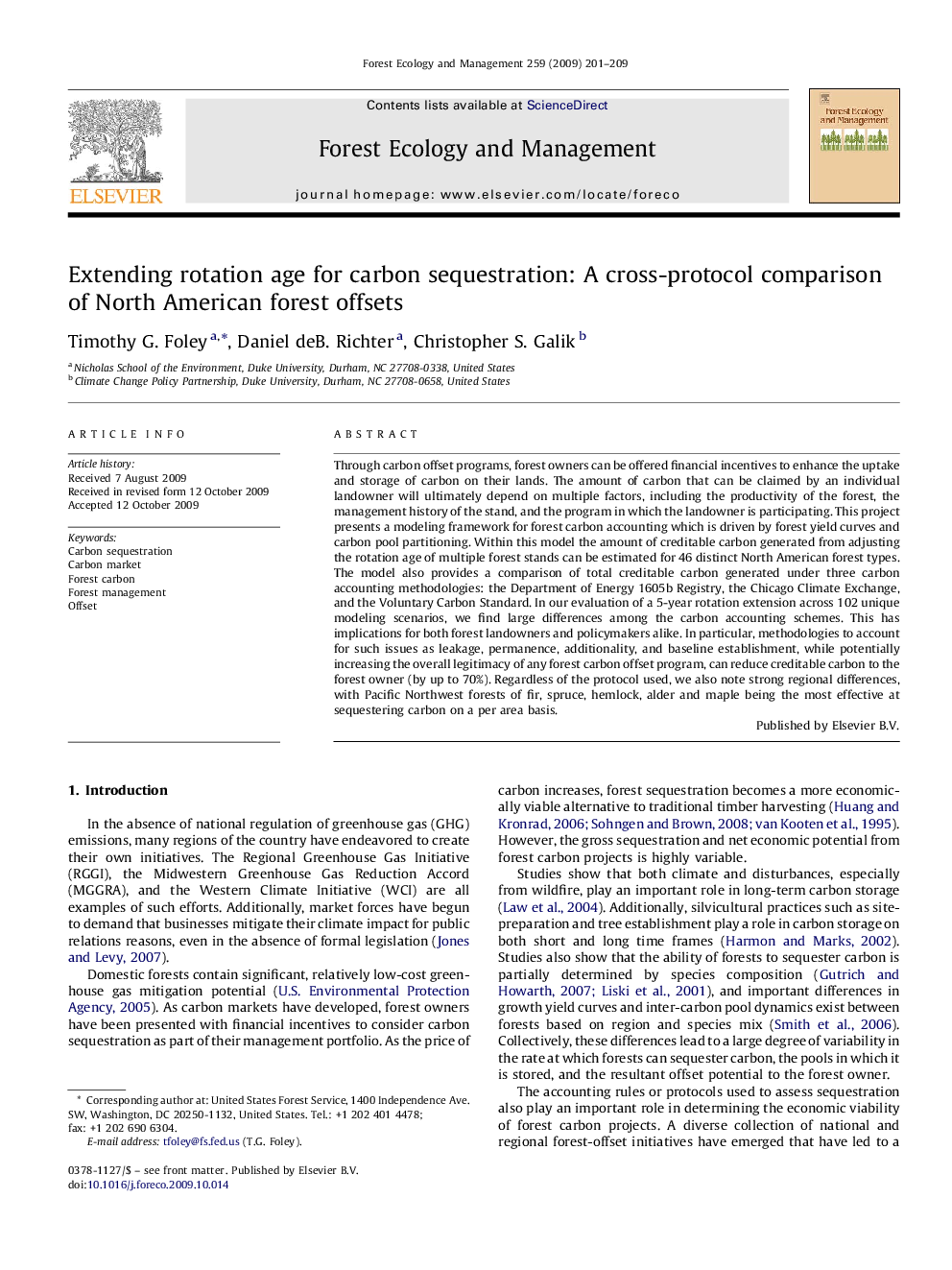| کد مقاله | کد نشریه | سال انتشار | مقاله انگلیسی | نسخه تمام متن |
|---|---|---|---|---|
| 88919 | 159326 | 2009 | 9 صفحه PDF | دانلود رایگان |

Through carbon offset programs, forest owners can be offered financial incentives to enhance the uptake and storage of carbon on their lands. The amount of carbon that can be claimed by an individual landowner will ultimately depend on multiple factors, including the productivity of the forest, the management history of the stand, and the program in which the landowner is participating. This project presents a modeling framework for forest carbon accounting which is driven by forest yield curves and carbon pool partitioning. Within this model the amount of creditable carbon generated from adjusting the rotation age of multiple forest stands can be estimated for 46 distinct North American forest types. The model also provides a comparison of total creditable carbon generated under three carbon accounting methodologies: the Department of Energy 1605b Registry, the Chicago Climate Exchange, and the Voluntary Carbon Standard. In our evaluation of a 5-year rotation extension across 102 unique modeling scenarios, we find large differences among the carbon accounting schemes. This has implications for both forest landowners and policymakers alike. In particular, methodologies to account for such issues as leakage, permanence, additionality, and baseline establishment, while potentially increasing the overall legitimacy of any forest carbon offset program, can reduce creditable carbon to the forest owner (by up to 70%). Regardless of the protocol used, we also note strong regional differences, with Pacific Northwest forests of fir, spruce, hemlock, alder and maple being the most effective at sequestering carbon on a per area basis.
Journal: Forest Ecology and Management - Volume 259, Issue 2, 15 December 2009, Pages 201–209